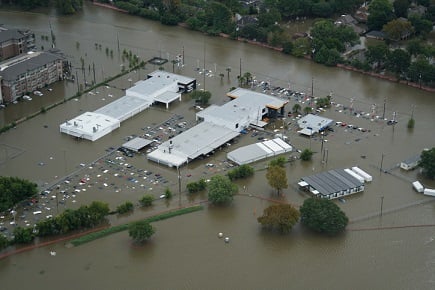Significant equity among Harvey victims bodes well for long-term recovery, according to Black Knight

Levels of homeowner equity vary widely across the disaster areas affected by Hurricane Harvey and those affected by Hurricane Irma, a Black Knight report has found, suggesting differences in their long-term recoveries.
The significant equity held by Hurricane Harvey-impacted borrowers bodes well for long-term recovery despite the extent of the damage in Texas, according to Black Knight Data and Analytics EVP Ben Graboske.
Black Knight found that homeowners with mortgages in Harvey-affected areas have an average combined loan-to-value ratio of 53% and hold an average equity of about $131,000. Among Harvey-affected borrowers, less than 0.5% were in negative equity before the storm and fewer than 4% have less than 10% equity.
Meanwhile, 5.3% of homeowners with mortgages in Irma-affected areas have negative equity, with another 5.6% having less than 10% equity. This compares to a national rate of 2.8% of homeowners with mortgages who have negative equity.
“In Florida, Hurricane Irma impacted a much larger portion of the state,” Graboske said. “The 48 FEMA-declared Hurricane Irma disaster areas include over 90% of the state’s mortgaged properties. To put this in perspective, that means that by balance, over 5% of all mortgages in the US are included in Hurricane Irma’s disaster areas. Unlike Houston, though, where all-time-high home prices have contributed to a significant reduction in negative equity, home prices in Florida remain 17% below their 2006 peak.”
Graboske also said that the 3.2 million Irma-affected borrowers have an average cumulative loan-to-value ratio of 57%, higher than the national average. He said 170,000 of those borrowers already had negative equity before the storm, and 180,000 had limited equity. Graboske attributed the negative equity rate, which is almost double the national average, to lackluster home-price recovery since the housing crisis.
Related stories:
Delinquencies jump in Harvey-affected areas
Homeowners with mortgages see year-over-year equity gains
The significant equity held by Hurricane Harvey-impacted borrowers bodes well for long-term recovery despite the extent of the damage in Texas, according to Black Knight Data and Analytics EVP Ben Graboske.
Black Knight found that homeowners with mortgages in Harvey-affected areas have an average combined loan-to-value ratio of 53% and hold an average equity of about $131,000. Among Harvey-affected borrowers, less than 0.5% were in negative equity before the storm and fewer than 4% have less than 10% equity.
Meanwhile, 5.3% of homeowners with mortgages in Irma-affected areas have negative equity, with another 5.6% having less than 10% equity. This compares to a national rate of 2.8% of homeowners with mortgages who have negative equity.
“In Florida, Hurricane Irma impacted a much larger portion of the state,” Graboske said. “The 48 FEMA-declared Hurricane Irma disaster areas include over 90% of the state’s mortgaged properties. To put this in perspective, that means that by balance, over 5% of all mortgages in the US are included in Hurricane Irma’s disaster areas. Unlike Houston, though, where all-time-high home prices have contributed to a significant reduction in negative equity, home prices in Florida remain 17% below their 2006 peak.”
Graboske also said that the 3.2 million Irma-affected borrowers have an average cumulative loan-to-value ratio of 57%, higher than the national average. He said 170,000 of those borrowers already had negative equity before the storm, and 180,000 had limited equity. Graboske attributed the negative equity rate, which is almost double the national average, to lackluster home-price recovery since the housing crisis.
Related stories:
Delinquencies jump in Harvey-affected areas
Homeowners with mortgages see year-over-year equity gains



